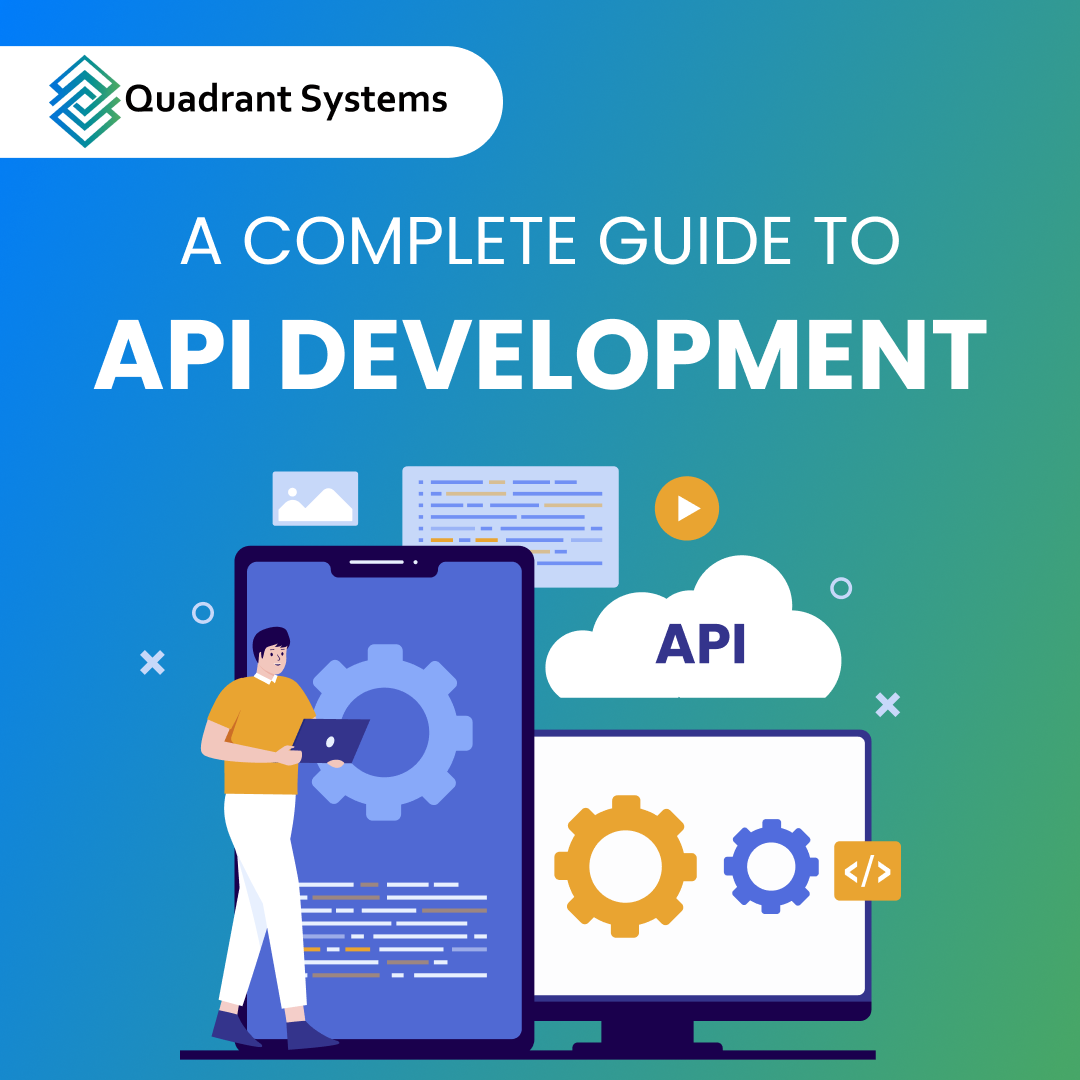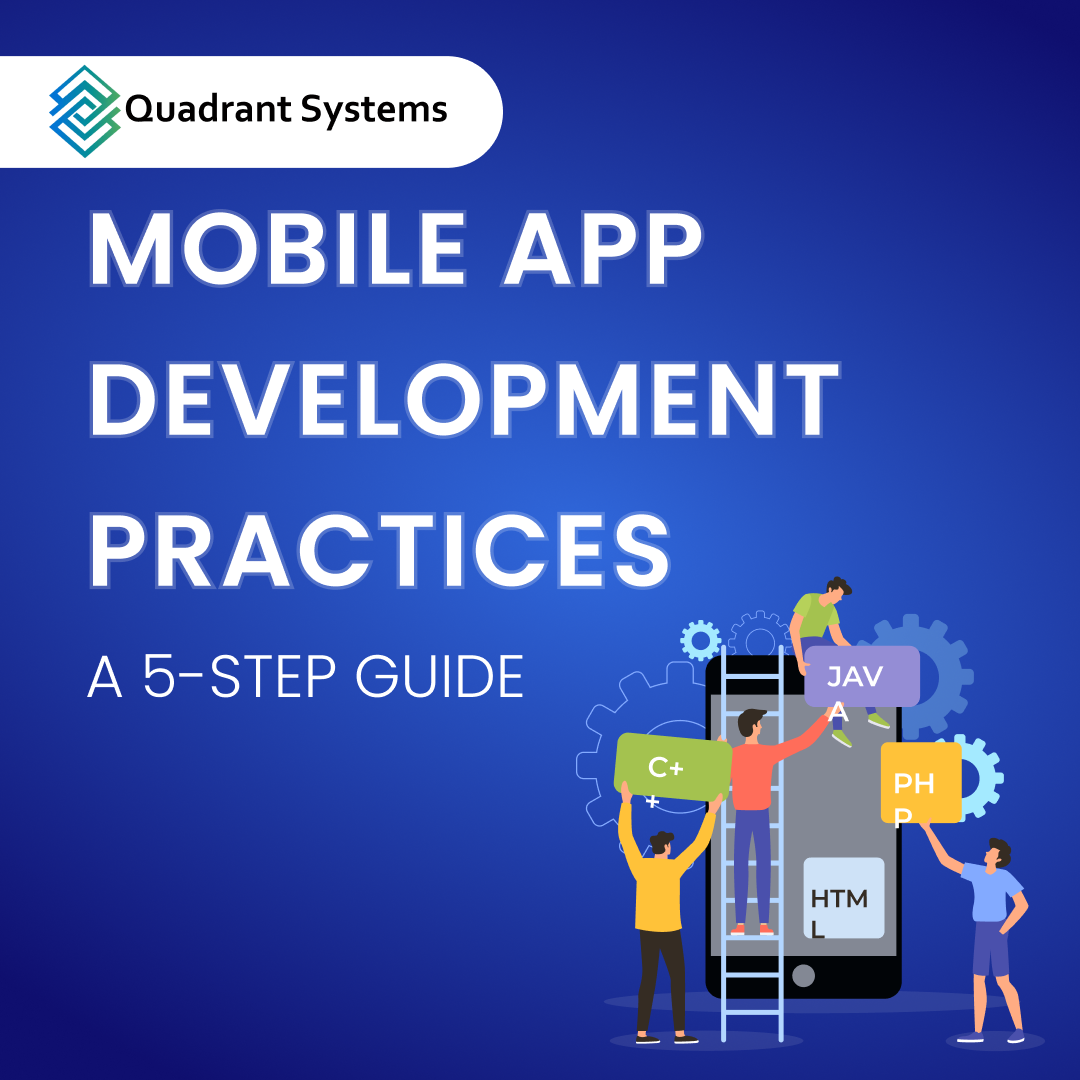A Complete Guide to API Development
In today’s interconnected digital landscape, the role of APIs (Application Programming Interfaces) has become increasingly vital, serving as the backbone of seamless communication and integration between diverse software applications. From enabling mobile apps to access real-time data to facilitating e-commerce transactions and powering IoT devices, APIs have revolutionized the way modern businesses operate.
As businesses strive to stay competitive and meet evolving consumer demands, understanding the fundamentals of API development has become imperative. In this comprehensive guide, we delve into the intricacies of APIs, exploring their types, functionalities, terminologies, development tools, best practices, and their profound impact on business growth and innovation.
Join us on this enlightening journey as we unravel the mysteries of API development and discover how Quadrant Systems can empower your organization to harness the full potential of APIs to drive success in today’s digital age. Whether you’re a beginner, tech enthusiast, seasoned developer looking to refine your API development skills or a business leader seeking to leverage APIs for enhanced connectivity and efficiency, this guide will equip you with the knowledge and insights needed to thrive in the API-driven ecosystem.
So, let’s embark on this transformative exploration and unlock the endless possibilities that APIs offer for businesses across industries.
What is an API?
An API (Application Programming Interface) is a set of guidelines and standards that allow one software application to utilize features or services from another application, device, or platform to enhance its functionality. Essentially, it acts as a bridge between different software products, facilitating the exchange of data and functionality.
APIs consist of two main components: a technical specification that outlines how data is exchanged between solutions and a software interface that is written to adhere to this specification. When one software application needs access to information or functionality from another, it calls upon the API of the latter and specifies its requirements. The second application then responds by providing the requested data or functionality as per the API’s specifications.
APIs have various uses, including speeding up software development services by allowing developers to leverage existing functionality, integrating third-party services into existing solutions, and even building entirely new applications by utilizing resources from external providers.
APIs are implemented using function calls, which are language statements that request software to perform specific services or actions. These function calls are documented in the API documentation and serve as the interface through which communication between applications occurs.
Types of APIs
In the realm of API development, understanding the different types of APIs is crucial for effectively catering to various business needs. From private APIs, tailored for internal organizational use, to partner APIs facilitating seamless integration between business partners, and public APIs, offering opportunities for brand exposure and revenue generation, each type serves distinct purposes. Composite APIs further streamline operations by combining multiple functionalities into a single call, optimizing performance and efficiency. With the right API development, integration, and management services, businesses can leverage the power of APIs to drive innovation and achieve their strategic objectives.
Now, let’s delve into the various types of APIs in brief.
Private APIs
- These APIs are designed to enhance services and solutions within an organization.
- Accessible only to in-house developers and contractors.
- Offers full control over API usage to the company.
Partner APIs
- Facilitate software integration between two parties, typically business partners.
- Openly promoted and shared with partners who have signed agreements with the publisher.
- Provides additional revenue streams and access to data while ensuring usage monitoring and maintaining corporate identity.
Public APIs
- Also known as external or developer-facing APIs, available for third-party developers.
- Enhance brand awareness and generate extra income if executed properly.
- Classifications include open APIs, freely available with documentation, and commercial APIs, requiring subscription or pay-as-you-go models.
Composite API
- Combines multiple service and data APIs to perform various tasks in a single call.
- Boosts execution speed and enhances performance in web interfaces.
How Does the API Work?
APIs, or Application Programming Interfaces, serve as intermediaries that enable different software applications to communicate and interact with each other. They define the methods and protocols through which one software application can request and exchange data with another.
For example, consider a weather forecasting application that requires real-time weather data to provide accurate predictions. Instead of gathering and processing the data itself, the application can utilize a weather API provided by a meteorological service. Through this API, the application can send requests for specific weather data, such as temperature, humidity, or precipitation forecasts. The weather API then processes these requests and returns the requested data to the application, which can then be displayed to the user.
This seamless exchange of data between the weather API and the forecasting application exemplifies the working of APIs in real-time scenarios. Businesses can leverage API development services to create APIs that facilitate such interactions, enabling efficient data exchange and integration between disparate systems and applications. Effective API management services ensure the smooth operation and optimization of these APIs, enhancing overall business operations and productivity.
How to develop an API?
APIs are developed through a meticulous process that involves several key steps to ensure functionality, reliability, and security. Firstly, developers identify the specific requirements and objectives of the API, considering factors such as data exchange protocols, supported functionalities, and integration capabilities.
Once the requirements are defined, developers proceed to design the API architecture, outlining the endpoints, data formats, and authentication methods. This design phase often involves collaboration between developers, architects, and stakeholders to ensure alignment with business goals and user needs. Subsequently, developers implement the API using programming languages and frameworks suited to the project’s requirements. This step includes writing the code for handling incoming requests, processing data, and generating responses.
Throughout the development process, rigorous testing is conducted to identify and address any bugs or inconsistencies. Finally, once the API is deemed stable and functional, it undergoes documentation to provide comprehensive guidance to developers on its usage and integration.
Overall, API development demands careful planning, coding expertise, and iterative refinement to deliver a robust and effective interface for seamless software integration.
It’s now time to dive into the technical aspects of API and discuss the various terminologies, tools, and practices of API development.
API Terminologies
Below are some essential terminologies associated with API development that you should familiarize yourself with:
- API Key – A unique code used to authenticate users, developers, or calling programs.
- Endpoint – Touchpoints where interactions occur between a server and an API.
- JSON – A data format utilized by APIs to exchange data between web applications, servers, or applications.
- GET – A method for requesting data from a server at a specified resource.
- POST – A method for sending data to an API server to update or create a resource.
- OAuth – An open-standard authorization framework for APIs, providing secure access to end-users data without accessing their passwords.
- Latency – The time taken by an API to process a request and respond.
- Rate-limiting – Controlling the rate of incoming and outgoing traffic, often defined by the total number of requests a user can make to the API.
- API Throttling – The process of controlling API usage by consumers for a specific duration.
Tools For API Development
Here are some of the key tools and products utilized in API development services:
- Apigee: A management tool by Google facilitating API updates, data transfer between apps, and building connected apps.
- Dredd: An HTTP API testing framework validating API descriptions and ensuring validation.
- APIMatic: A developer experience platform generating SDKs for APIs across multiple platforms and keeping them in sync with updates.
- Sandbox: Provides mock RESTful APIs for testing, reducing risks and costs associated with third-party API calls.
- Postman: Allows developers to document, test, and evaluate API performance interactively and can be set up for automation.
- SoapUI: An open-source testing tool for functional and non-functional tests, including regression, compliance, security, and load tests.
- Swagger: An open-source framework used by major technology companies for API development.
- JMeter: Open-source software for performance testing of RESTful APIs.
Best Practices for Effective API Development
Here are the top 5 practices for effective API development:
- Throttling: Implement throttling to manage traffic overflow, prevent Denial of Service attacks, and ensure backup APIs are available when needed.
- Support for Overriding HTTP Methods: Allow RESTful APIs to override HTTP methods, such as POST and GET, to ensure compatibility with proxies that have limitations.
- SDKs and Libraries: Provide development teams with essential resources like SDKs and libraries to accelerate service development and implementation by offering reusable code and processes.
- Security: Prioritize security without compromising user-friendliness. Utilize token-based authentication to enhance API security while ensuring a seamless user experience.
- Documentation: Create comprehensive documentation for the API to help developers understand the process thoroughly. Well-documented APIs reduce project costs, and implementation time, and improve overall efficiency.
Adhering to these practices ensures that APIs are robust, secure, and user-friendly, facilitating smooth integration and enhancing the developer experience.
Conclusion
In conclusion, the importance of APIs has significantly increased, not only in software development but also in facilitating business collaborations. APIs play a crucial role in enhancing business profitability by providing essential technological connectivity.
Quadrant Systems stands out as a premier choice for API development, backed by over 13 years of industry experience and a global workforce of over 500 professionals. With delivery centres strategically located in South Africa, India, the UAE, and Australia, Quadrant Systems offers unparalleled accessibility and support to clients worldwide. Our expertise in API development is demonstrated through a track record of successful projects across diverse industries.
By leveraging cutting-edge technologies and adhering to industry best practices, we ensure the delivery of robust, scalable, and secure APIs tailored to meet the unique needs of our clients. Partnering with Quadrant Systems guarantees access to top-tier talent, proven methodologies, and a commitment to excellence, making us the trusted partner for API development solutions. Don’t hesitate to reach out to Quadrant Systems to kickstart your API development journey and unlock new possibilities for your business. Let us help you harness the power of APIs to drive innovation and success in your organization.








